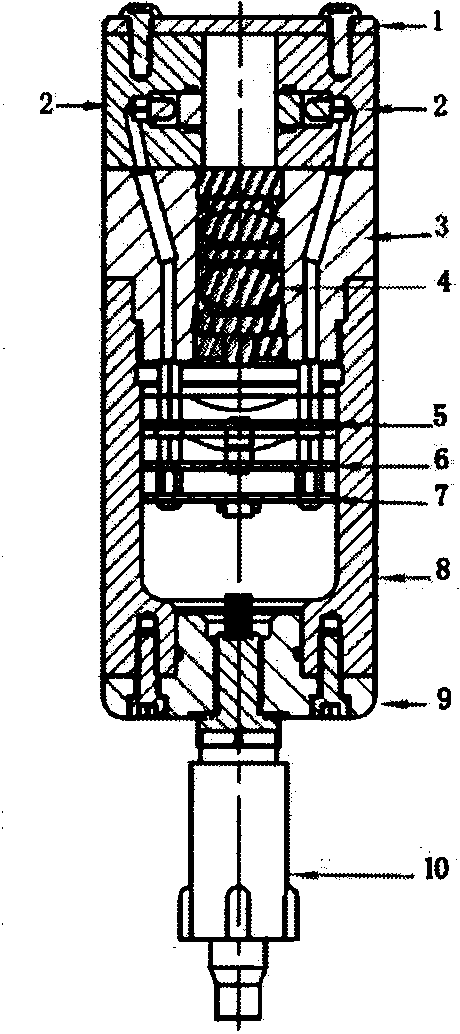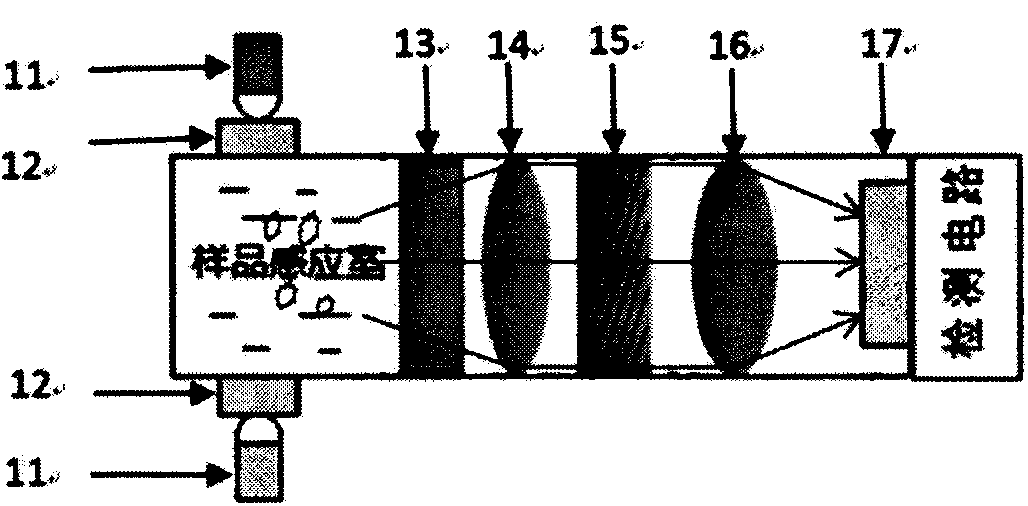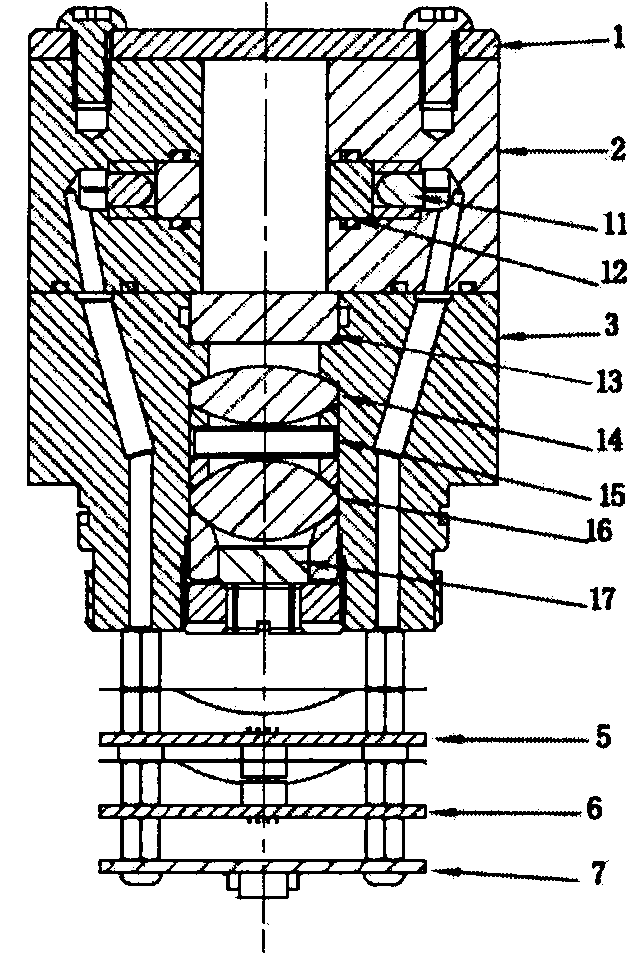Ocean chlorophyll fluorescence in-situ monitor
A chlorophyll fluorescence and monitor technology, used in fluorescence/phosphorescence, material excitation analysis, etc., can solve the problems of many influencing factors, limited data volume, long time consumption, etc., and achieve extended application range, low power consumption, and high detection accuracy. Effect
- Summary
- Abstract
- Description
- Claims
- Application Information
AI Technical Summary
Problems solved by technology
Method used
Image
Examples
Embodiment Construction
[0027] Further illustrate the present invention below in conjunction with accompanying drawing.
[0028] Such as figure 1 As shown, a marine chlorophyll fluorescence in-situ monitor has a cylindrical overall structure (the length of the shell is 168mm, and the diameter is 64mm). The main components include: two excitation light source seats 2 on the top, and an optical detection system 4 inside the end cover 3 , the analog circuit module 5, the digital circuit module 6 and the power management module 7 inside the casing, as well as the high-pressure-resistant sealed casing 8, the rear cover 9 and the watertight connector 10.
[0029] The principle of optical detection of the instrument is as follows: figure 2 As shown, two specific wavelength LEDs 11 synchronously and periodically emit blue excitation light, which is emitted through the light source window 12. Chlorophyll a molecules in the external sample are excited by blue light to generate red fluorescence, and part of t...
PUM
| Property | Measurement | Unit |
|---|---|---|
| wavelength | aaaaa | aaaaa |
Abstract
Description
Claims
Application Information
 Login to View More
Login to View More - R&D
- Intellectual Property
- Life Sciences
- Materials
- Tech Scout
- Unparalleled Data Quality
- Higher Quality Content
- 60% Fewer Hallucinations
Browse by: Latest US Patents, China's latest patents, Technical Efficacy Thesaurus, Application Domain, Technology Topic, Popular Technical Reports.
© 2025 PatSnap. All rights reserved.Legal|Privacy policy|Modern Slavery Act Transparency Statement|Sitemap|About US| Contact US: help@patsnap.com



